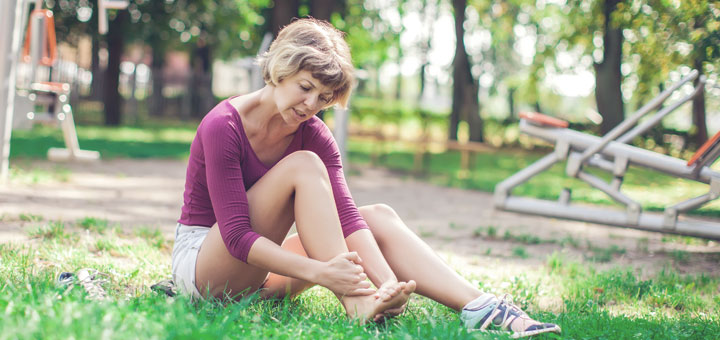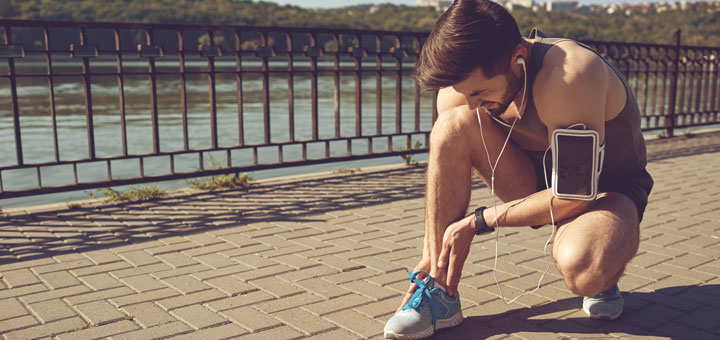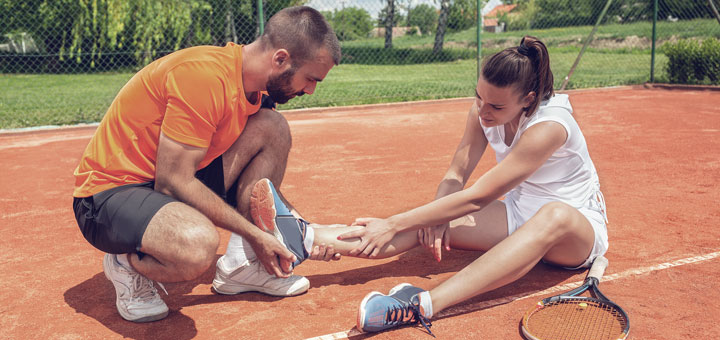Preventing Sport Foot & Ankle Injuries
Custom Orthotics | orthoticsnearme.ca
Sport related injuries are injuries that may happen when you play sport or exercise. Some injures occur by accidents and others can result from inappropriate foot wear or improper gear. Foot injuries can occur when if the training process is too intensive and not balanced or as a result of poor training practices.

How do I get my feet injured?
You can get your feet injured when you are not in proper, ‘ready to go’ condition. Not warning up or stretching enough before playing your game or before you start your training exercise course may lead to injuries. The most common foot and ankle sport injuries are:
- Sprains and strains
- Knee injuries
- Swollen muscles
- Achilles tendon injuries
- Pain along the shin bone
- Fractures
- Dislocations
What’s the difference between an acute and a chronic sport injury?
There are two kinds of sport injuries: acute and chronic. Acute injuries occur suddenly when playing or practicing. Excessive compression of soft tissue such as skin or muscles, sprained ankles, strained ligaments and fractured bones are acute injuries. Signs of an acute foot or ankle injury may include:
- Swelling
- Sudden, sharp pain
- Not being able to place weight on a leg, knee, ankle, or foot
- Shin, knee, ankle, forefoot, toe is very tender
- Not being able to move a joint as normal
- Extreme leg or weakness
- A bone or joint that is visibly out of place
Chronic foot and ankle injuries happen after you play a sport or exercise for a long time. Signs of the chronic sport injuries can include the following:
- Pain when play or exercise
- A dull ache when you rest
- Swelling that lasts for more than 3 days
What should I do if I get injured?
Never try to “work through” the pain of a sport injury. Stop playing or exercising when you feel pain. Playing or exercising more only causes more harm. Some injuries should be seen by a doctor right away. Others you can treat yourself.
Call and visit a doctor when the following occur:
- The injury causes sever pain, swelling, or numbness
- You can’t put any weight on the foot, knee or leg
- An old injury hurts or aches
- An old injury swells
- The joint doesn’t feel normal or feels unstable
If you don’t have any of these signs, it may be safe to treat the injury at home. If the pain or other symptoms get worse, you should call your doctor. Use the RICE (Rest, Ice, Compression, and Elevation) method to relieve pain, deduce swelling, and speed healing. Follow these sour steps right after the injury occurs and do so for at least 48 hours:
Rest: Reduce your regular activities. If you’ve injured your foot, ankle, or knee, take weight off it. A crutch can help. If you right foot or ankle is injured, use the crutch on the left side. If you left foot or ankle is injured, use the crutch on the right side.
Ice: Put an ice pack to the injured area for 20 minutes, four to eight times a day. You can use a cold pack or ice bag. You can also use a plastic bag filled with crushed ice and wrapped in a towel. Take the ice off after 20 minutes to avoid cold injury.
Compression: Put even pressure (compression) on the injured area to help reduce swelling. You can use an elastic wrap, special boot, air cast, or splint. Ask your doctor which one is best for your injury.
Elevation: Put the injured area on a pillow, at a level above your heart, to help reduce swelling.

How are sport injuries treated?
Treatment often begins with the RICE method. Here are some other things your doctor may do to treat your sport injury:
Nonsteroidal anti-inflammatory drugs. Your doctor may suggest that you take nonsteroidal anti-inflammatory medications such as aspirin, ibuprofen, ketoprofen, or naproxen. These medications reduce swelling and pain. You can buy them at a drug store. Another common drug is acetaminophen. It may relieve pain, but it will not reduce swelling.
Immobilization. Immobilization is a common treatment for sports injuries. It keeps the injured area from moving and prevents more damage. Splints, casts and leg immobilizations are used to immobilize sports injuries.
Surgery. In some cases, surgery is needed to fix sports injuries. Surgery can fix torn tendons and ligaments or put broken bones back in place. Most sports injuries don’t need surgery.
Rehabilitation & physiotherapy. Rehabilitation is a key part of treatment. It involves exercises that step by step get the injured area back to normal. Moving the inured area helps it to heal. The sooner this is done, the better. Exercises start by gently moving the injured body part through a range of motions. The next step is to stretch. After a while, weights may be used to strengthen the injured area.
As injure heals, scar tissue forms. After a while, the scar tissue shrinks. This shrinking brings the injured tissues back together. When this happens, the injured area becomes tight or stiff. This is when are at greatest risk of injuring the area again. You should stretch the muscles every day. You should always stretch as a warm-up before you play or exercise.
Don’t play your sport until you are sure you can stretch the injured area without pain, swelling or stiffness. When you start playing again, start slowly. Build up step by step to full speed.
Rest. Although it is good to start moving the injured area as soon as possible, you must also take time to rest after an injury. All injuries need time to heal; proper rest helps the process. You doctor can guide you one the proper balance between rest and rehabilitation.
Other therapies. Other common therapies that help with the healing process include mild electrical currents (electrostimulation), cold packs (cryotherapy), heat acks (thermotherapy), sound waves (ultrasound), and massage.

What can I do to prevent sport injuries?
Tips to help you avoid foot & ankle sport injuries:
- Don’t bend your knees more that half way when doing knee bends.
- Don’t twist your knees when you stretch. Keep our feet as flat as you can.
- When jumping, land with your knees bent.
- Do warm-up exercises before you play any sport.
- Always stretch before you play or exercise.
- Don’t overdo it.
- Cool down after hard sports or workouts.
- Wear shoes that fit properly, are stable, and absorb shock.
- Use the softest exercise surface you can find; don’t run on asphalt or concrete.
- Run on flat surfaces.
For adults:
- Don’t be a “weekend hero”. Don’t try to complete a week’s worth of activity in a day or two.
- Learn to do your sport right. Use proper form to reduce your risk of “overuse” injuries.
- Use safety gear.
- Know your body limits.
- Build up your exercise level gradually.
- Strive for a total body workout of cardiovascular, strength-training, and flexibility exercises.
For kids:
- Be in proper condition to play the sport.
- Get a physical exam before you start playing sports.
- Follow the rules of the game.
- Wear gear that protects, fits well, and is right for the sport.
- Know how to use athletic gear.
- Don’t play when you are very tired or in pain.
- Always warm up before you play.
- Always cool down after you play.
For parents and coaches:
- Group children by their skill level and body size, not by their age, especially for contact sports.
- Match the child to the sport. Don’t push the child too hard to play a sprt that she or he may not like or be able to do.
- Try t find sports programs that have certified athletic trainers.
- See that all children get a physical exam before playing.
- Don’t play a child who is injured.
- Get the child to a doctor, if injured.
- Provide a save environment for sports.